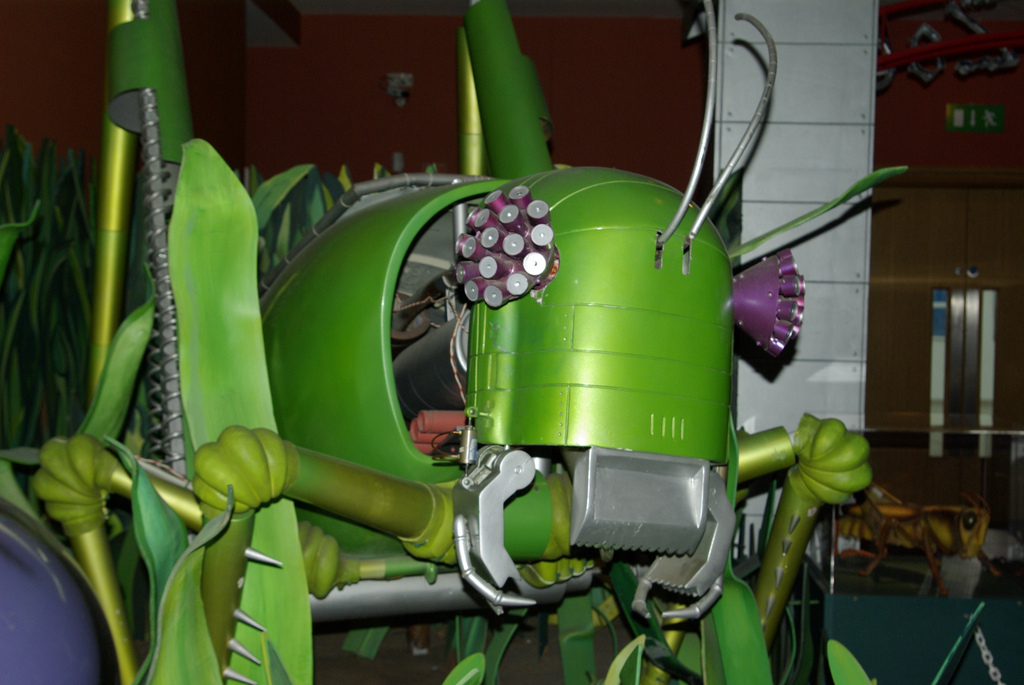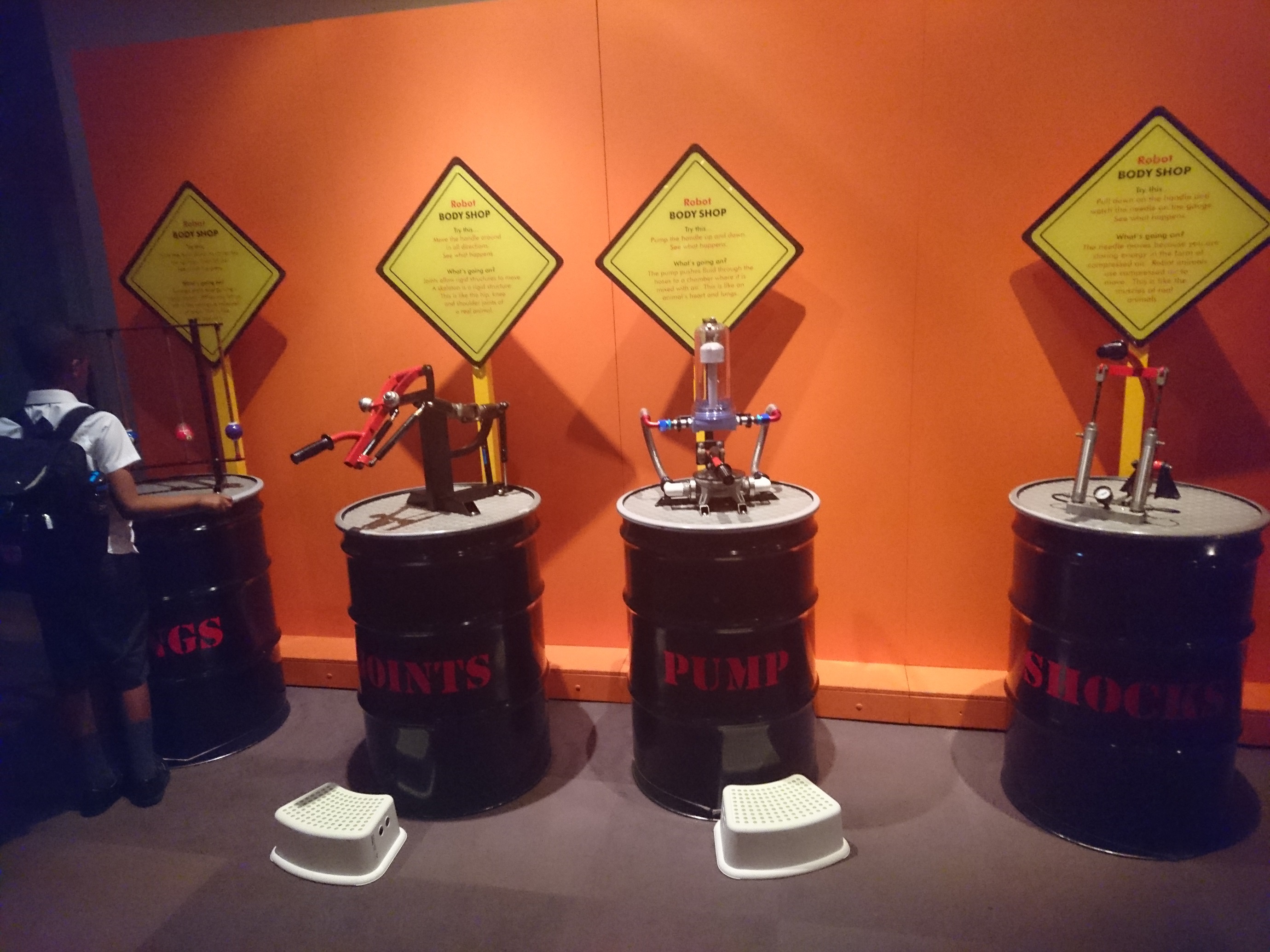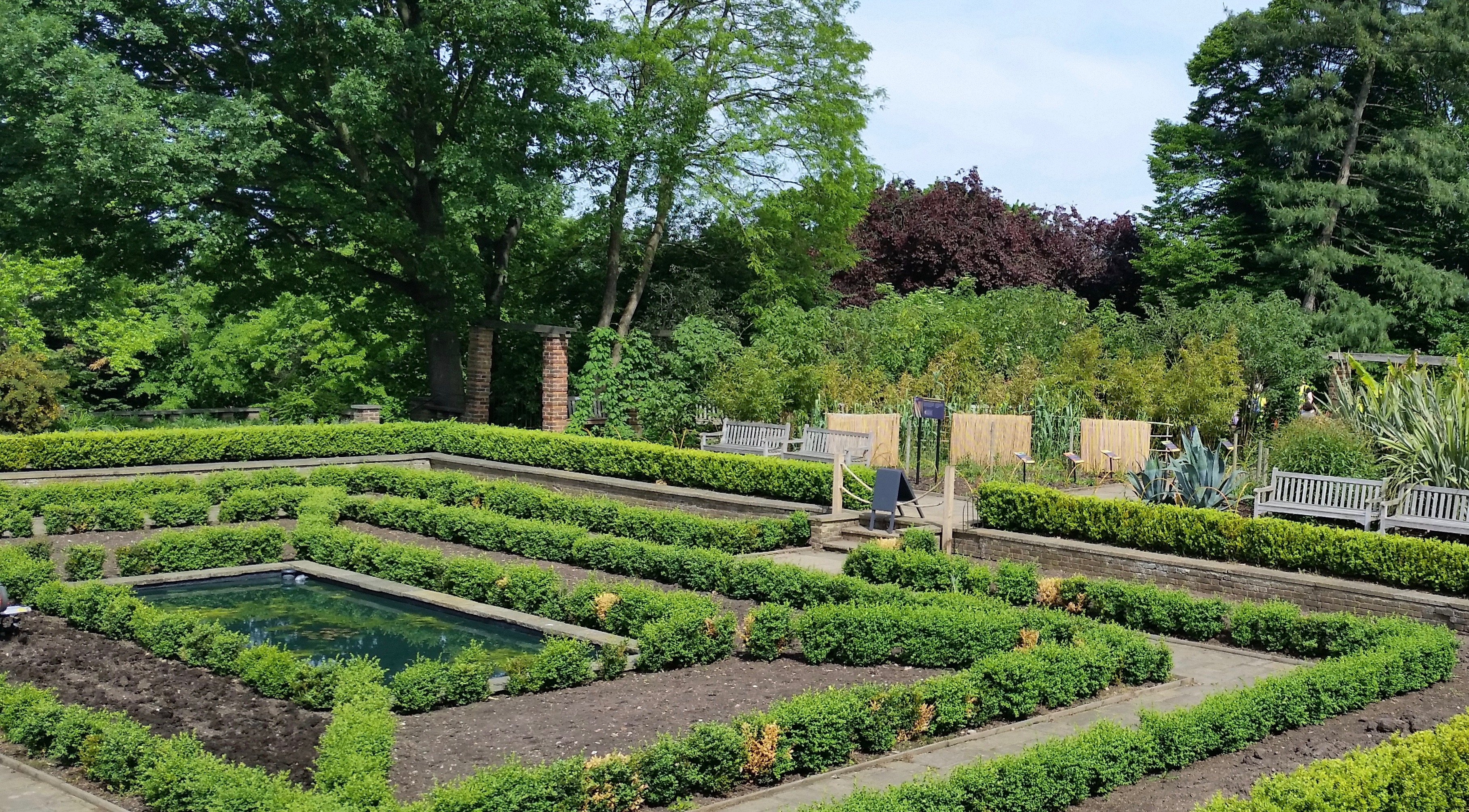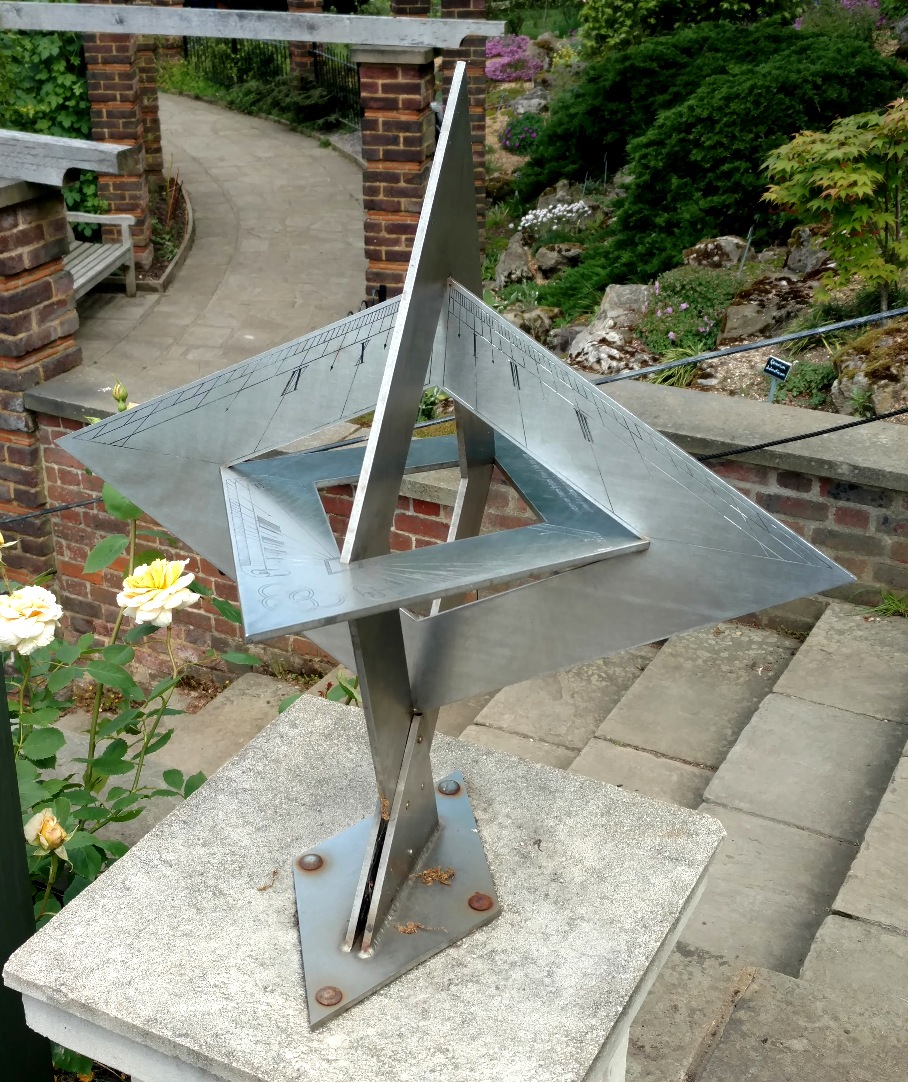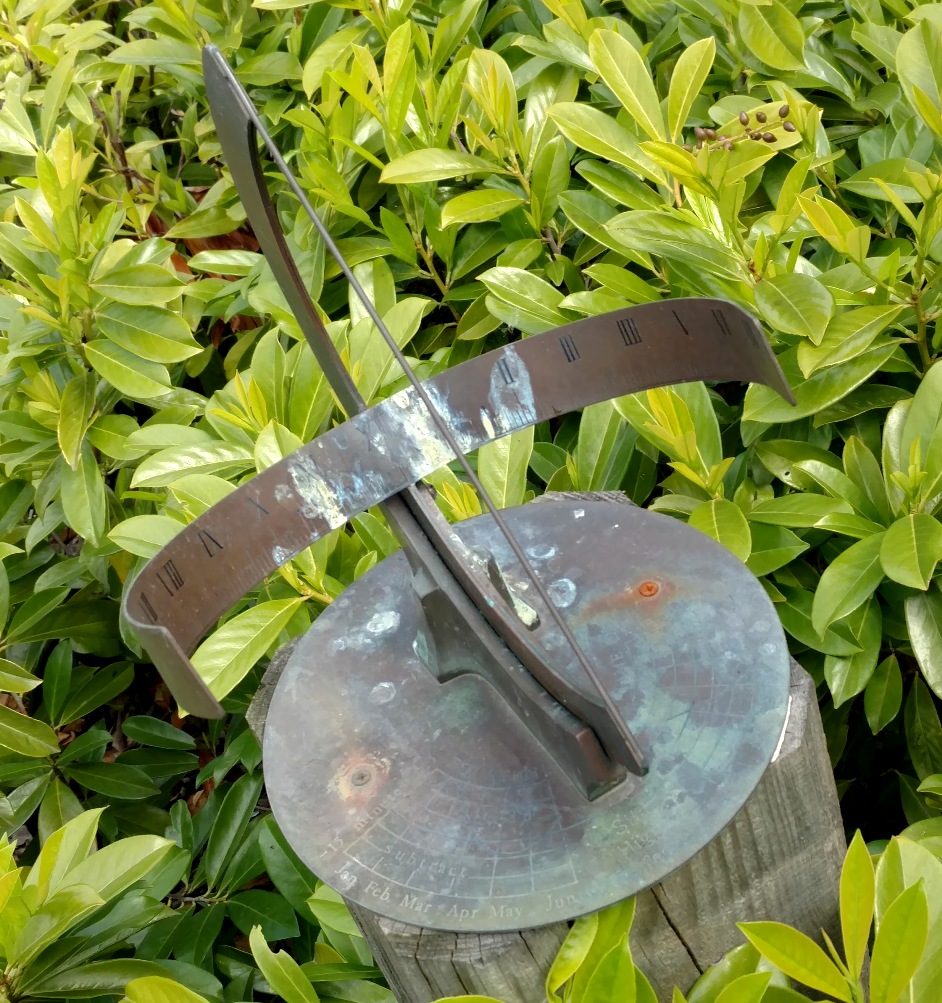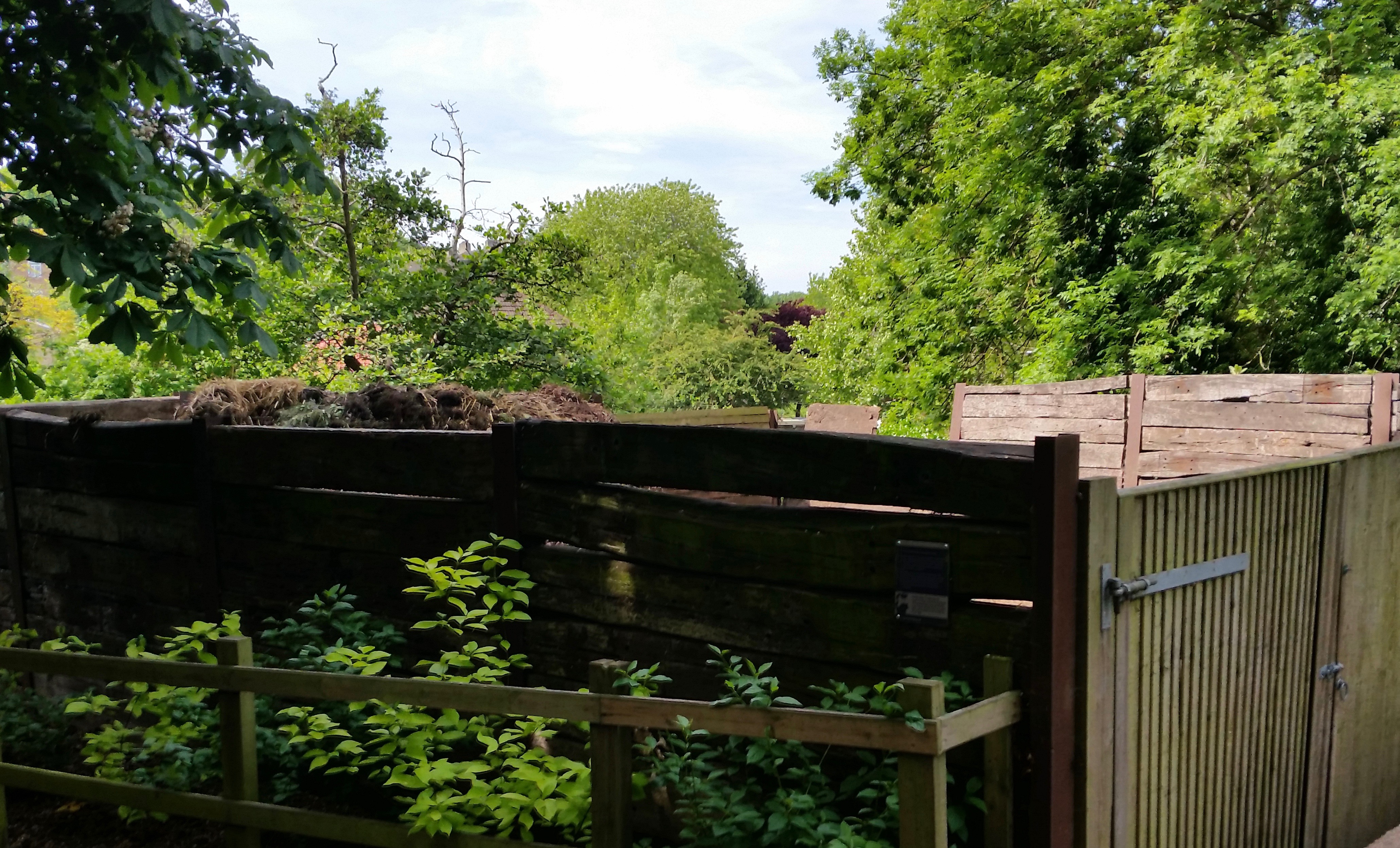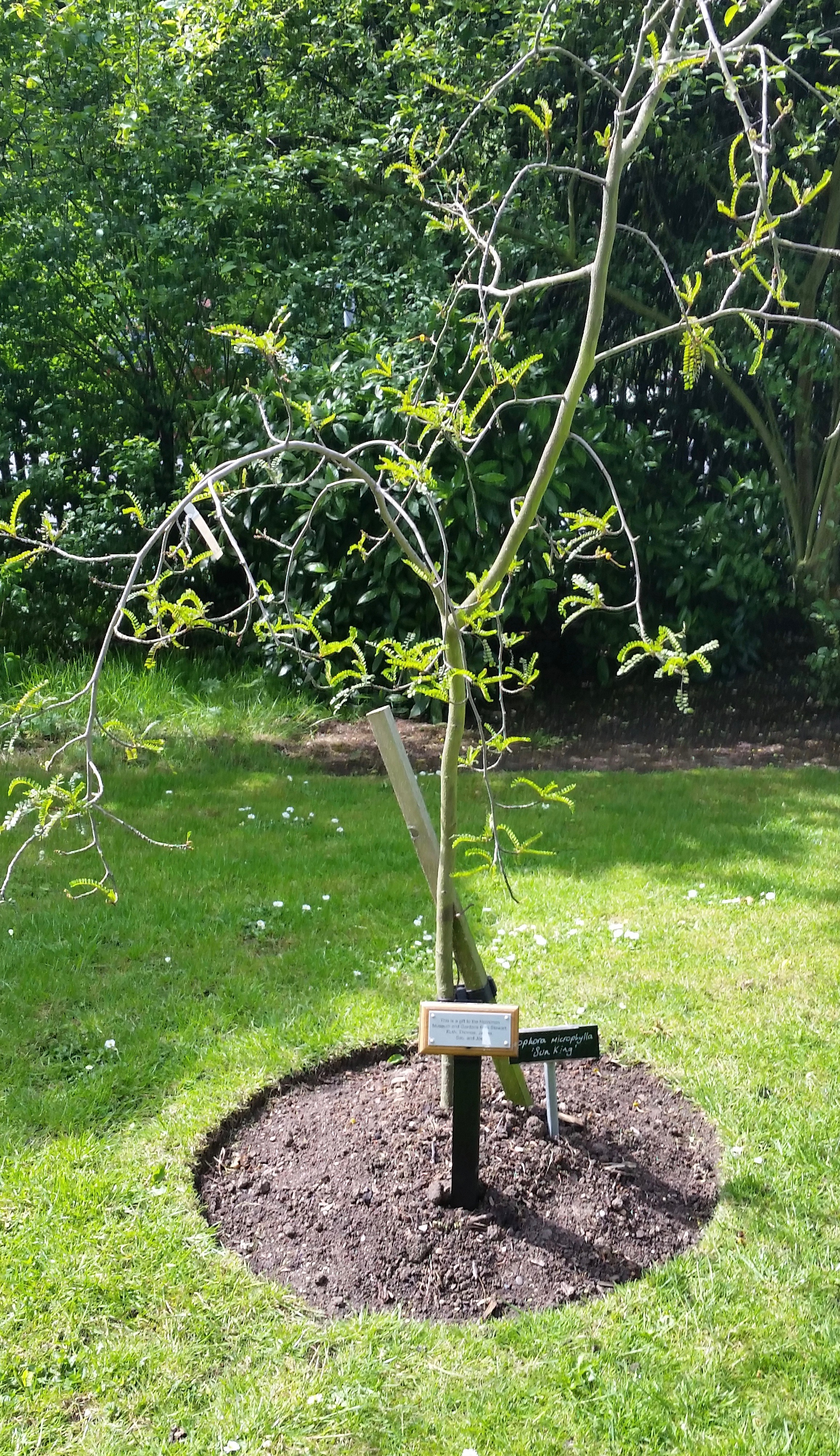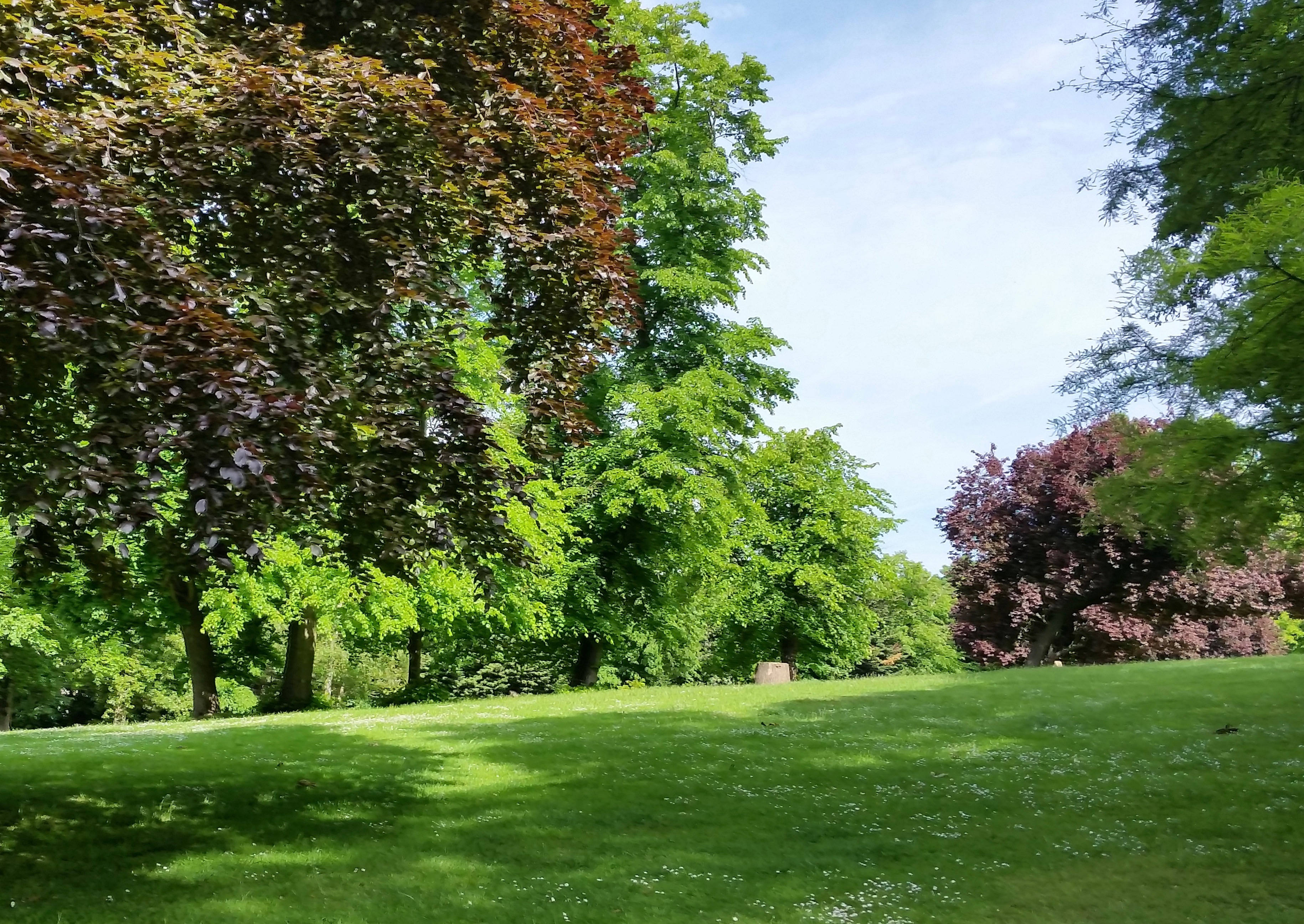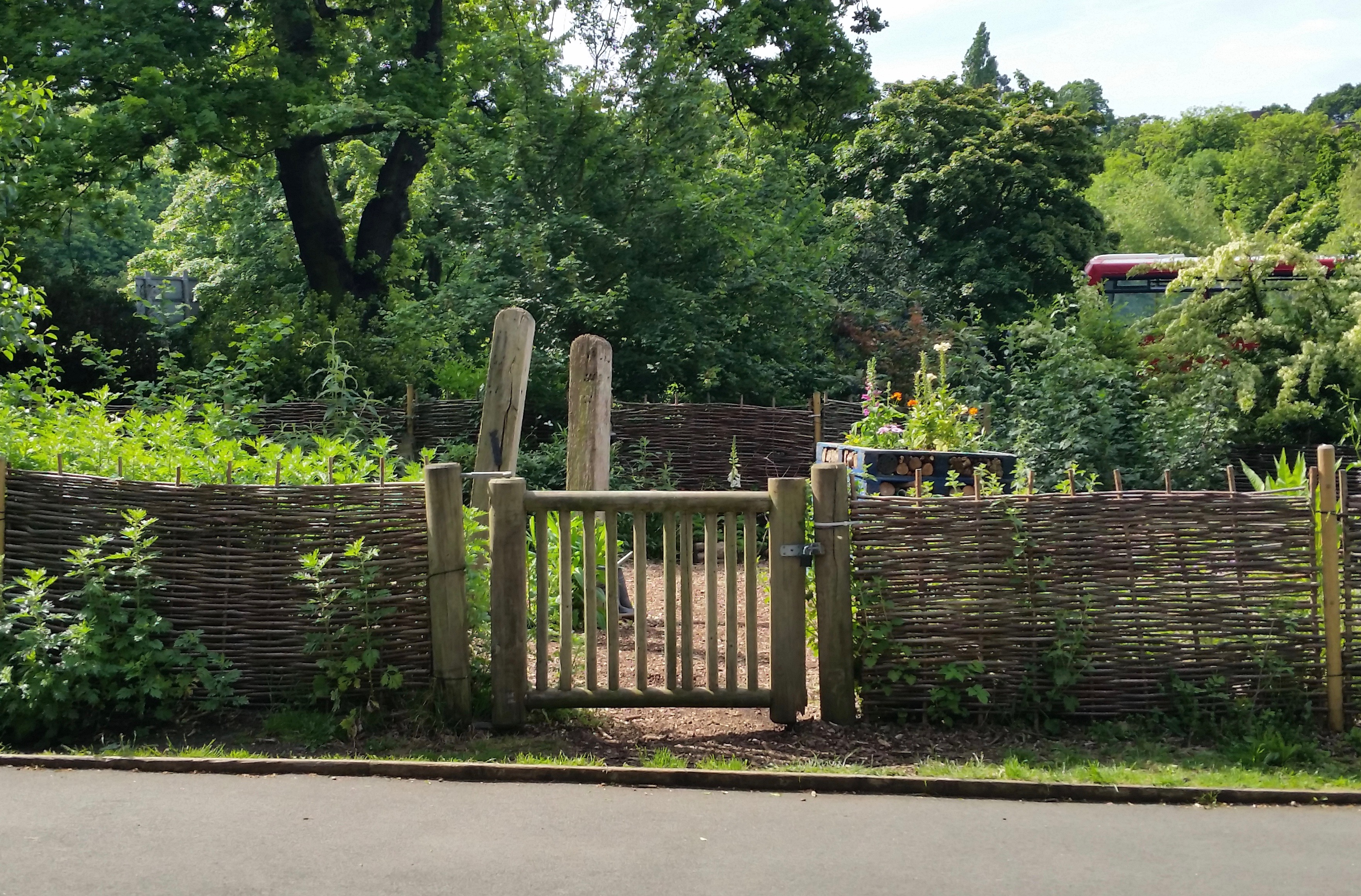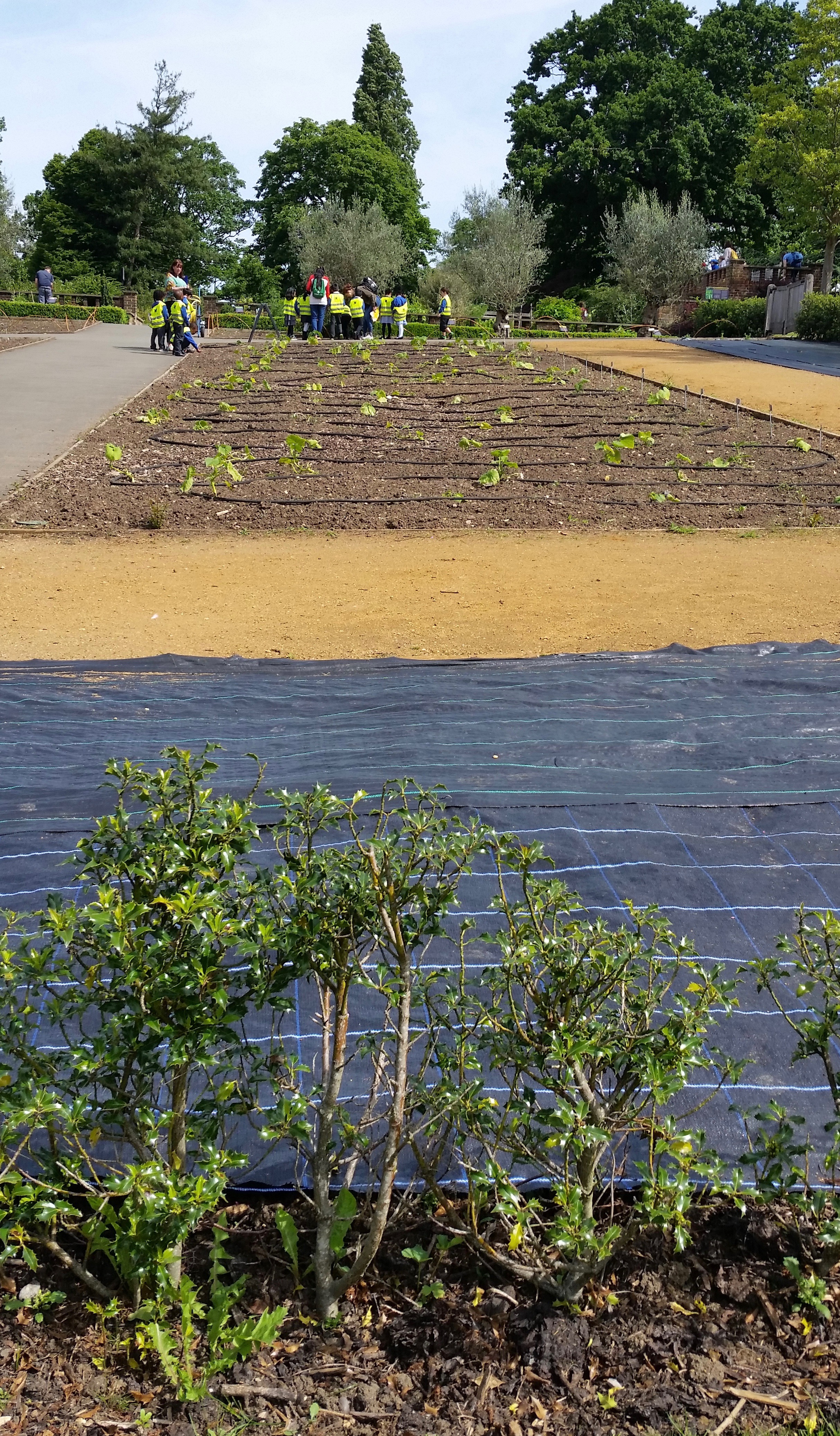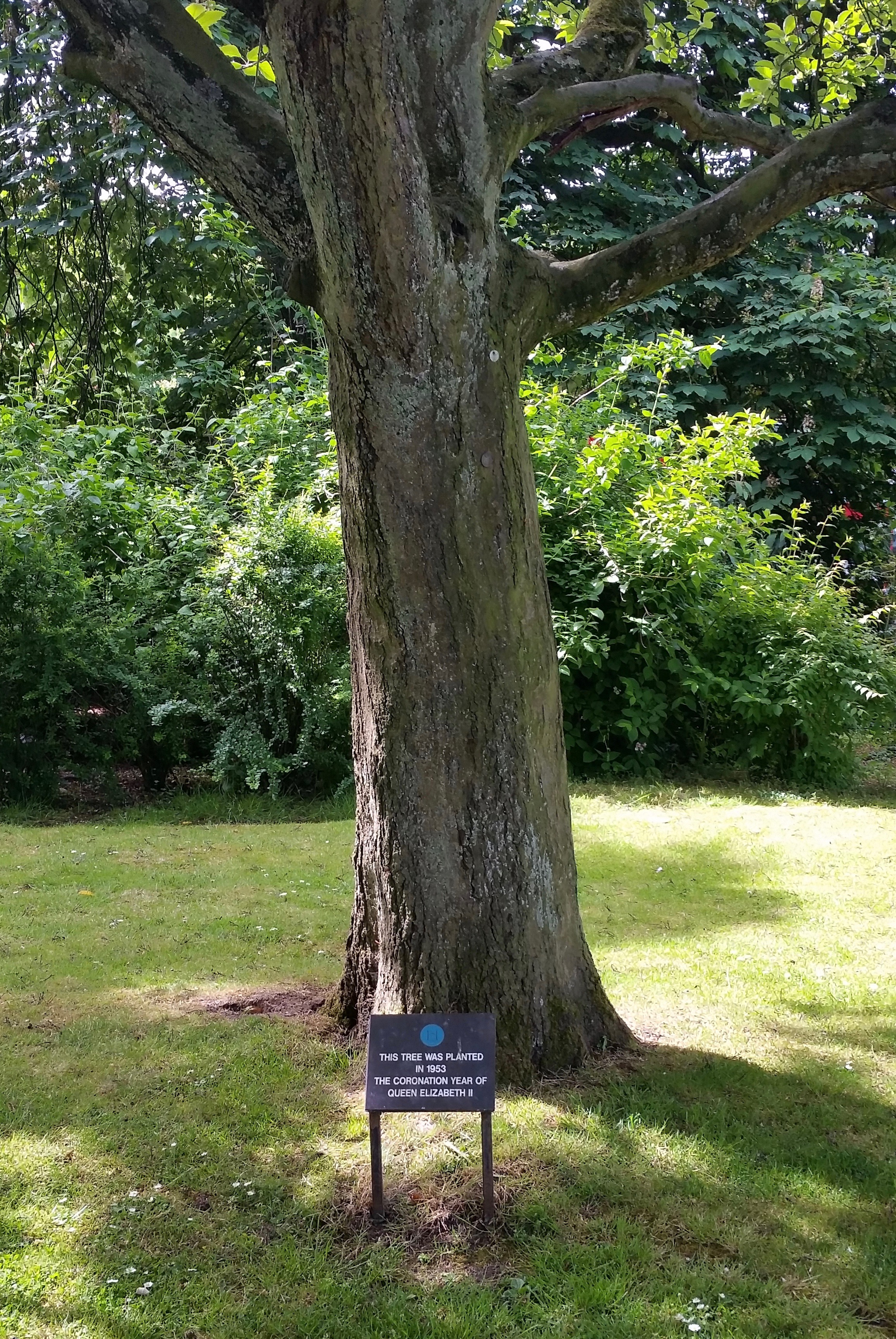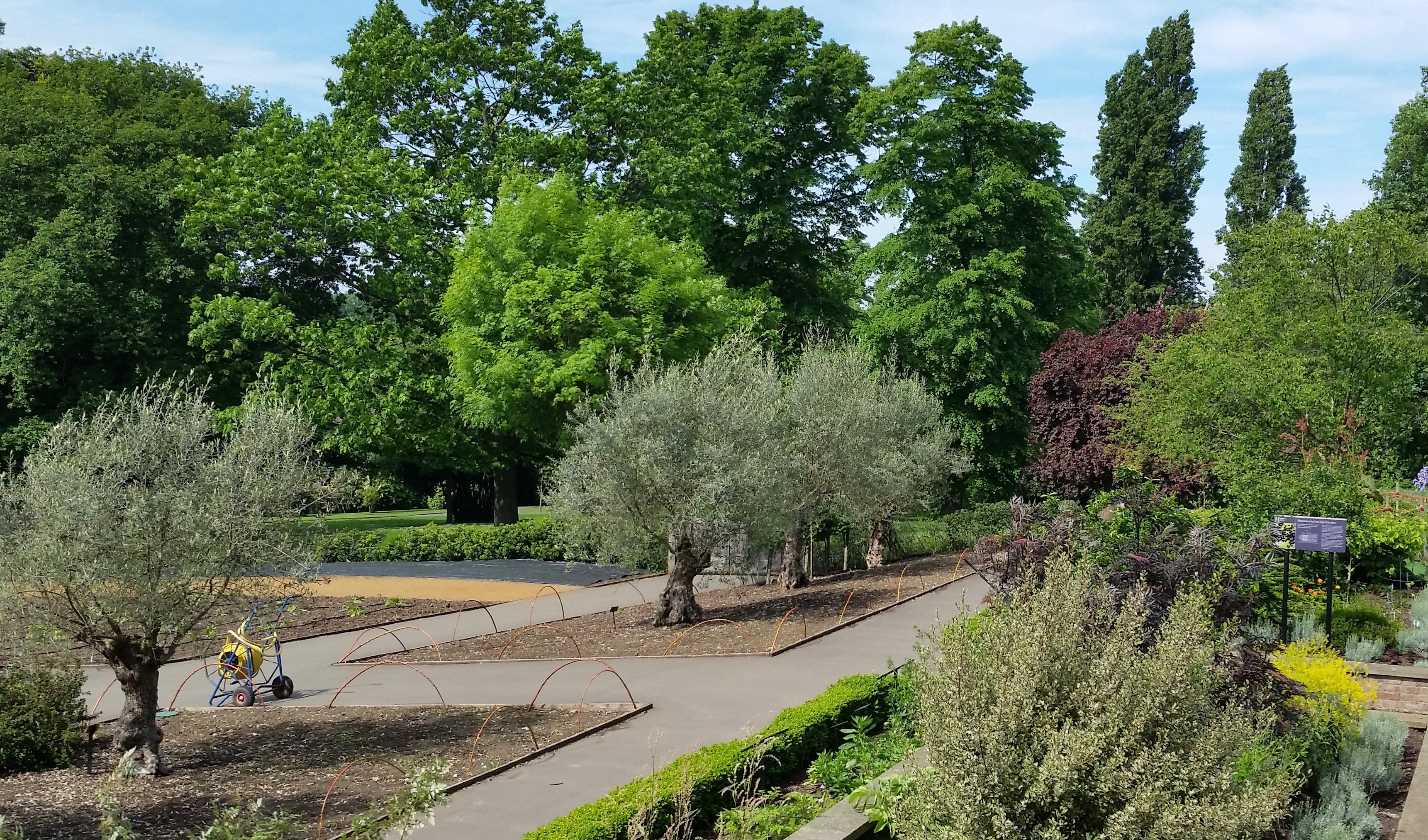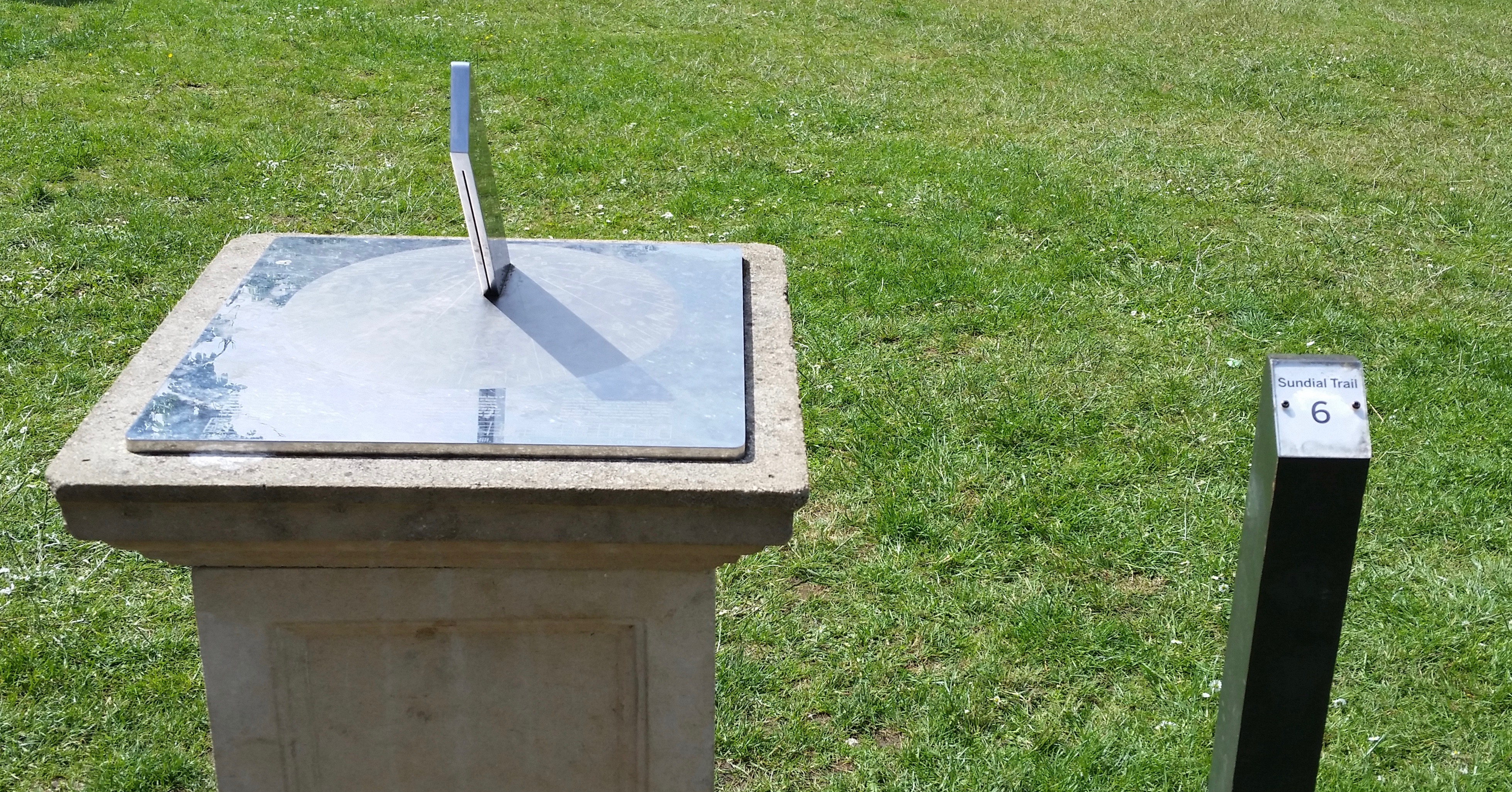Horniman Museum
From Londonhua WIKI
Horniman Museum and Gardens
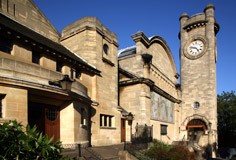 Horniman Museum and Garden | |
| Director | Janet Vitmayer |
|---|---|
| Opened | 1901 |
| Location |
Forest Hill London, SE23 United Kingdom |
Overview
The Horniman Museum and Garden was founded by John Horniman. He opened this museum to show off his collection of objects and bring the world to Forest Hill. This museum has an acclaimed aquarium, anthropology, musical instruments and natural history collection. There are many parts of the museum that can be correlated to the Garden.
Contents
- 1 Horniman Museum and Gardens
- 2 Overview
- 3 Background
- 4 The Gardens
- 4.1 Sundials
- 4.1.1 Scaphe Sundial
- 4.1.2 Stained Glass Sundial
- 4.1.3 Butterfly Sundial
- 4.1.4 Tea-time Sundial
- 4.1.5 Double Polar Horniman Logo Sundial
- 4.1.6 Spot-on Sundial
- 4.1.7 Armillary Octahedron Sundial
- 4.1.8 Equatorial Sundial
- 4.1.9 Roman Sundial
- 4.1.10 Horniman Sundial
- 4.1.11 Analemmatic Sundial
- 4.1.12 CUE Building Ceiling Sundial
- 4.2 Display Gardens
- 4.3 Conservatory
- 4.4 Brandstand
- 4.5 Nature Trail
- 4.1 Sundials
- 5 References
- 6 External Links
- 7 Image Gallery
Background
John Horniman was a successful tea trader and philanthropist. He used the wealth to begin collecting objects, artifacts, and specimens that "illustrated natural history and the arts and hand crafts from people around the world" in 1860. He did this to "bring the world to Forest Hill"and educate his community. He went to places such as Egypt, Sri Lanka, Burma, China, Japan, Canada, and the United States. His interests became well known and soon people began approaching Horniman with specimens and curiosities. In the late 19th century, his collection had grown too large for his house. The Horniman family moved next door and turned their old house into a museum. Over the years the musuem has expanded its footprint several times. The 1911 expansion by Charles Harrison Townsend uses similar design features to complement the original building. The 1996 Eco Building was designed by Achitype and uses sustainable wood while utilizing an early grass roof. The 2002 extension designed by Allies & Morrison also follows the original buildings style, ass well as being sourced from the same quarry as the 1911 extension.
Natural History Exhibit
The Natural History exhibit at the Horniman Museum aims to show how human lives are linked to the nature of Earth. It also attempts to display the diverse wildlife of the world. The creators of the gallery hoped that through the exhibit people would become inspired by nature. The gallery has been open since the early 20th century and has remained almost unchanged since then. To learn more about the exhibit click here
Taxidermy
The art of taxidermy was developed to preserve animals of all sorts including birds, mammals and to fish. By stuffing the animal, it can remain as life like as possible even after many years. It wasn't until the middle of the 19th century that people started to mount the taxidermy in their house through fashionable cases. The more exotic species the more desirable they were. During the Victorian and Edward time periods, it became popular to stuff what you hunted. The taxidermy animals were trophies which you could show off and prove your accomplishments.
The Horniman Walrus
The Horniman Walrus, which has become a mascot of the museum, has been on display for over one hundred years. The walrus first appeared in an 1886 exhibition on Canada as part of a group of animals assembled by James Henry Hubbard, a Canadian hunter and explorer. The exhibition was highly praised by Queen Victoria, and, when the exhibition closed, the walrus and several other animals were bought by Frederick Horniman for display.
Walruses (Latin name Odobenus rosmarus) are one of the largest species of seal, living in the waters of the Arctic. To deal with the cold, walruses have thick skin and blubber. The diet of a walrus consists mainly of clams and shellfish. Walruses detect their prey with sensitive whiskers on their faces and use their snouts of jets of water to uncover prey from the seabed.
Edward Hart
Edward Hart is a taxidermist who lived from 1847-1928. He started in the Fathers business, William Hart & Son, Preservers of Birds and Beasts before starting his own. He later turned his into a museum. He then tried to sell he collection to the Bournemouth Society but was unable to. He was later able to sell it to John Hall of Stafford. After Hall's death the collection sent to Stowe School in Buckinghamshire. Leicester Museums stared to take care of his collection in 1923 and it was bought by Leicester Museum Service, Hampshire County Council Museums Service and the Horniman Museum in 1980. a lot of his collection is displayed in the Natural History exhibit.
Evolution - Domestication 2
Evidence of evolution: There are many cases where man has domesticated wild animals as companions or food. Because humans involvement by breeding their domesticated animals, these species are unlike their wild form and look dissimilar to other of their own genus. Breeders select individual animals that closely resembles what type of species they want to create and the result is then bred again to continue the breed. The museum displays the two closest examples of domestication, pigeons and dogs. The human involvement of creating breeds produces artificial examples of evolution but demonstrate that in the wild a natural evolutionary process can occur.
Defensive Protection
This exhibit shows the devices that animals use to protect themselves from predators as well as other animals of their own kind. Internal mechanisms, such as those that fight bacteria, have not been included in this exhibit. Many of the devices used defensively, are more often times than not used offensively in capturing prey. Some animals have more than one method so therefore could be classified under more than one heading in this exhibit.
Surface Protection
Surface protection can be divided into 7 sections, sheets, spines, exoskeletons, limy skeletons, scales and armor. the purpose of this protection is to prevent a predator from biting the animal, which will kill it. While skin is a protection against bacteria and viruses it was not included in this exhibit but it is more or less universal in multicellular animals. Many of the protections are modifications of skin or secreted by it.
Figure Clock
The Horniman Museum features an ornate clock above the Natural History exhibit. The clock depicts scenes of Jesus and his apostles. It was made in the 1800's and has been in the museum since it opened in 1901. It chimes every quarter hour and has moving biblical scenes including the passion and nativity. The clock was manufactured in Germany and plays German hymns.
Music Exhibit
The music exhibit at the Horniman Museum is incredible. It covers one fourth of the lower level of the museum. There are many different examples of music throughout the years and how instruments have evolved. To learn more about the exhibit, click here.
The Robot Zoo
The Robot Zoo is a temporary exhibit that goes from February 2017 till October 2017. This exhibit features animals that are recreated as robots which helps people learn about the inside of the animals. Animals featured in robotic form includes a giraffe, beetle, grasshopper, and many more. Also featured are interactive places where you can create and design your own robotic creatures
Grasshopper
Attributed to Samuel Mann via flickr - Link
The Body Shop
"Robot Body Shop" are series of four stations that show how various parts of animals and insects work. These stations recreate live body functions in machine forms that mimic how an actual animal or insect body part would operate in real life. The first station demonstrates how a muscle works. The second station demonstrates how a heart and lungs function. The third station demonstrates how joints work and finally, the last station demonstrates how energy is stored and released.
Exploting Nature
Inevitably, discovery of faraway places and their wildlife resulted in exploitation for profit. Scientific collecting led to hunting for trophies and shooting and trapping on an industrial scale. By the late 19 century millions of birds and mammal skins were being materials for all sorts of businesses. Taxidermy thrived, Nature's bounty was thought to be endless, but many species suffered catastrophic declines as a result, Today wildlife conservation organisations attempt to control the worst excesses of exploitation.
Decoration
Decoration The art of taxidermy developed to preserve birds, mammals and fish to look as life-like as possible. Quality taxidermy mounts became fashionable items for home decoration from the middle of the 19th century. Cases containing rarities and exotic species were particularly desirable. Willams and Sons taxidermy ohop, Dublin 1900 image courteoy of Martin Dunne, British Historical Taxidermy Society.
Fashion
Fashion The use of fur and feathers for women's clothing and accessories reached extraordinary heights in the late Victorian and early Edwardian It of dress especially hats. fashionable incorporate plumes, wings, even whole birds onto supply the millinery was extensive. in paradise, gulls to species suffered severe declines or faced extinction as Maria Christina de (1806-78) Queen of doll on wearing incorporating Leneer Bardot OErich Lessing
Trophies
Trophlas Hunting, shooting and fishing were popular pursuits in the Victorian and Edwardian periods, Trophies were a physical record of the catch and embellished the reputation of the eatcher Taxidermists were in demand for preserving record fish, unusual varieties and all kinds of game from the Lmpire,
The Gardens
In 1901 Frederick Horniman donated his museum and 9 acres of land to the London City Council. Horniman wanted to create a place that would give people the space to relax, learn and play. After the donation of the property the museum and garden, the 9 acres grew by extending into the surrounding area. Today the gardens extend over an area of 16.5 acres with sundials hidden throughout the area, sheep, and a musical playground.
Sundials
Hidden throughout the gardens and museum are a trail of several different sundials. This path was established with the help of the British Sundial Society, which is a society that was established in 1989 that currently has about 400 members. The sundials range from being located on the ceiling, to a brick wall, to even one that uses a person's shadow to tell the time. There are a total of 12 sundials to explore on the property.
Scaphe Sundial
Angela Hodgson designed this sundial as a juxtaposition of the smooth surface of the spherical inner bowl with the disorganized outer surface and stem. This is meant to symbolize the conflict between perfect human ideals and the death and decay time passing brings. The dial's plant-like stem was influenced by the Chinese Magnolia flower. The tip of the shadow created by the gnomon indicates solar time.
Stained Glass Sundial
Designed by Roselyn Loftin, the dial is a feature of the Conservatory. The design is meant to symbolize elements of the museum, each blue panel represents a collection and the green panels represent the gardens. The shadow from the sundial is situated so it can be seen inside the building, despite the actual structure being outside. Time is indicated by the gnomon's shadow on the glass inside the Conservatory. The layout shows morning hours on the right and evening hours on the left. There is a plaque underneath the dial explaining the "Equation of Time".
Butterfly Sundial
The butterfly sundial was originally designed for the Sunday Express Garden at the Chelsea Flower Show in 1987. It was meant to demonstrate a mixture of science and art. The sundial commemorates Noel Ta'Bois's 20th wedding anniversary. The Horniman received the sundial after his death in 1988. To read the dial, you use the edge of the shadow of the butterfly's wing to indicate Solar Time.
Tea-time Sundial
Double Polar Horniman Logo Sundial
Spot-on Sundial
Armillary Octahedron Sundial
The Armillary Octahedron Sundial was designed by David Young and John Moir in 2007. The design was inspired by Borromean rings. Borromean rings are three interlocking rings that are no longer interlocking if one ring is removed. Instead of ring, the design uses diamonds. The inscriptions on the diamonds represent strength and unity. To tell time, the vertical diamond casts shadows on the markings of the other two diamonds. Depending on the time of day is which diamond should be referenced. [1]
Equatorial Sundial
The Equatorial Sundial was created by Silas Higgon in 1994. It consists of two half circles and a rod. As the sun passes through the sky, the shadow cast by the rod on the curved strip of metal behind it tells the time. On the base of the sundial there is an inscription of a graph of the Equation of Time. [2]
Roman Sundial
This version of a Roman Sundial was constructed in 2004 by David Brown. The sundial has 12 hours, to represent the time between sunrise and sunset, changing the length of the hours with the changing of the seasons. This dial has been modified from the original roman style to read as having equal length hours in the day, but retains the Roman appearance. Roman sundials also have marks to indicate solstices and equinoxes: the central green line denotes an equinox, the red line denotes the Summer Solstice, and the blue line the Winter Solstice.[3]
Horniman Sundial
Analemmatic Sundial
CUE Building Ceiling Sundial
Display Gardens
All botanical displays have been carefully created by the museum's gardeners and curators to unite the indoor and outdoor collections. They reflect themes of the exhibits displayed in the museum and can be seen inside and outside of it.
Conservatory
This Victorian Conservatory was originally built at the Horniman family house at Coombe Cliffe, Croydon, in 1894. By 1982, it had fallen into disrepair. The structure was dismantled and moved to its current site where it was beautifully restored with the help of English Heritage. It re-opened in 1989 and is used for performances, workshops, and as a function room.
Brandstand
From the grandstand, visitors are able to enjoy a breathtaking vista of London. It was built in 1903 from a design by Charles Harrison Townsend and it is a focal point for a lot of the museum's outdoor summer events programme such as concerts or film screenings, while surrounding terrace provides a large picnic area with stunning views.
Nature Trail
The Horniman Nature Trail is the oldest in London. It is roughly half a mile long on the site of the original Crystal Palace and South London Junction Railway. The railway was closed in 1954 and the area was left unmanaged until 1972. This resulted in it becoming a wild woodland area. Today, the trail is managed carefully to encourage a wide variety of plants, birds, insects and other animals which depend on each other for survival. Pond and meadow habitats have been introduced to attract new species, and a log pile area is home to dozens of different mini beasts, including the endangered stag beetle. The trail is a sensitive area and much time goes into managing it for your enjoyment. The main entrance to the Nature Trail is located on the cycle path that runs parallel with the Museum and Gardens and can be accessed from London Road. [4]
References
- ↑ Sundial trail. Retrieved from http://www.horniman.ac.uk/collections/stories/sundial-trail/story-chapter/armillary-octahedron
- ↑ Sundial trail. Retrieved from http://www.horniman.ac.uk/collections/stories/sundial-trail/story-chapter/armillary-octahedron
- ↑ Stories - Collections - Horniman Museum and Gardens. (2017). Horniman.ac.uk. Retrieved 22 June 2017, from http://www.horniman.ac.uk/collections/stories/sundial-trail/story-chapter/roman-sundial
- ↑ The Horniman Museum and Gardens. (n.d.). Gardens - Displays. Retrieved May 22, 2017, from http://www.horniman.ac.uk/visit/displays/gardens#image-4
- History of the Museum. (n.d.). Retrieved May 22, 2017, from http://horniman.ac.uk/about/museum-history
External Links
If appropriate, add an external links section
Image Gallery
If appropriate, add an image gallery
